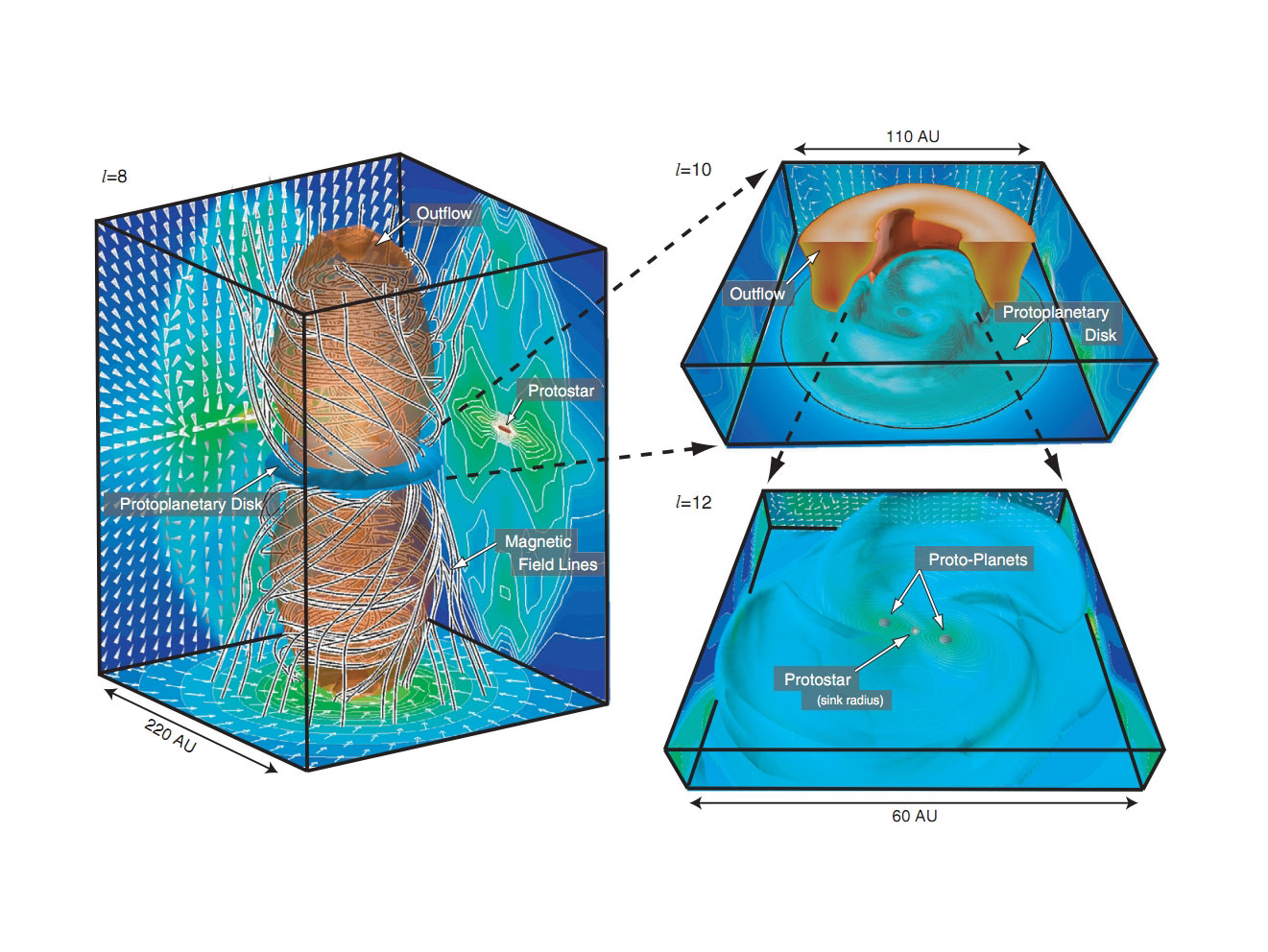Home > For Researchers > Public Research > Introduction of adoption public research ⑧
Introduction of adoption public research ⑧
Formation of gaseous planets by gravitational instability and the evolution of protoplanetary disks
Masahiro Machida (University of Kyushu)
Recent observations have identified a large number of planets of many different types. Some of the discovered planetary systems are similar to our solar system, however there are also many that are significantly different. For example, the planets which were discovered by direct imaging are planets with the mass of Jupiter or more that are traveling on orbits several 10s of AU or farther from the center star. As previous observations have shown, there are also a large number of planets known as “hot Jupiters.” These planets have the mass of Jupiter or more and are located extremely close to the center star. The Kepler Space Telescope has discovered large numbers of Earth-size to Neptune-size planets, however Jupiter-size and larger planets make up the vast majority of the exoplanets that have been officially verified. Understanding how these planets and planetary systems that are different from our solar system were formed is important for understanding the planetary formation process. However it is difficult to explain these planets (and systems) using the standard planetary formation model. The standard model was constructed so as to reproduce the conditions of our solar system, and it is not certain whether this model can be applied to other planetary systems. Even if this model can be used, it will be limited to planetary systems which are similar to the solar system, and cannot explain the existence of highly diverse planetary systems such as those described above. If the standard model that is currently trusted cannot be applied to other planetary systems, then it may also become necessary to reconsider the accepted scenario for the formation of our solar system and the Earth.
A gas disk (protoplanetary disk), composed of the materials that later form a star and planets, is formed from a cloud of gas called the “molecular cloud core.” Radio observations are now being used to investigate the characteristics of molecular cloud cores in detail. However observation of a disk immediately before the formation of a planet is difficult. This is due to the small spatial scale of the disk and the fact that the disk is buried in a dense gas cloud. In recent years, although ALMA observations have helped us begin to understand the structure of the disk immediately after a star forms, we are still unable to determine from observation the disk properties which constitute the initial conditions for planet formation. Therefore in order to produce a correct understanding of the planetary formation process without contradictions and construct a correct theory of planetary formation, it is necessary to understand the process by which the gas in the disk contracts, as well as the processes that explain the birth of stars, the growth of protoplanetary disks, and the birth and growth of planets. Because the process of molecular cloud contraction involves complex interaction of various phenomena, numerical simulations are essential. However the computation cost of such first-principle computations is extremely high and to this point they have been little carried out.
The objective of this research is to use the latest supercomputers and a numerical computation technology called nested grid systems to set the molecular cloud core prior to the formation of planets as the initial conditions, and then compute its development in order to understand the planetary formation process. Nested grid systems is a method of covering the overall field with a low spatial resolution grid while covering areas that require high spatial resolution with a fine grid. By correctly connecting the flow speeds at the margins of the different grids, it is possible to advance the process time for the rough grid and fine grids together. This method is suitable for computations ranging from interstellar dynamic contractions to star, disk, and planet formation, and allows spatial image resolution of astronomical bodies with vastly different scales such as protostars, circumstellar disks, planets, and molecular cloud cores.
After the contraction of the molecular cloud core, the density and temperature gradually rise until contraction eventually stops and the protostar forms. Before and after protostar formation, mass ejections known as jets and outflows occur, and a protoplanetary disk forms around the protostar. Within the protoplanetary disk, the gravity of the disk itself causes the disk to split, forming bodies of planetary mass. The figure (from Inuzuka, Machida, and Matsumoto 2010) is the result of a past numerical simulation, and shows the structures on different scales. As you can see in the left panel, on the larger scale, outflows are occurring from close to the center. In the top right panel, you can see that a protoplanetary disk has formed at the base of the outflows. The bottom right panel shows that protoplanet have formed due to splitting of the protoplanetary disk. We will further improve these computations and investigate these kinds of systems in more detail in the future. We hope that the results will allow us to understand the conditions of protoplanetary disks which constitute the initial conditions for planetary formation. The simulation results will be compared with the latest ALMA and other observations, aiming to improve our understanding not only of the planetary formation process, but also the stellar formation process as well.

